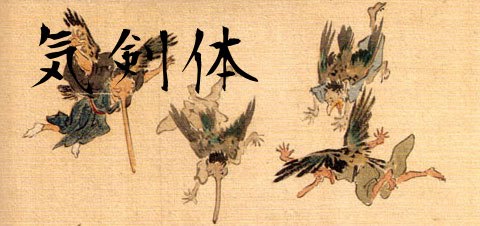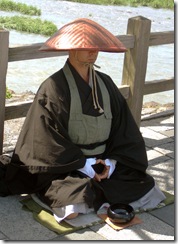The Hidden Aspects of Kata Training:
Most martial arts training is begun using kata as the starting point before moving on to henka. Henka is often seen as the goal, or rather they see the goal as the ability to easily and freely change given the situation. Kata training is the bridge to henka and the ability to freely change in any given situation. However, kata training is often neglected not because it is unimportant, but rather it is not well understood. Most seem to merely use the kata as a general guide for a technique. In addition, the kata is often practiced with the wrong mind-set, which undermines its purpose. To neglect the kata is to miss its hidden importance. To see the hidden we should first explore the easily seen aspects of kata training.
The Seen
On the surface kata training is a practice to help the practitioner to gain insight on how to perform technique. The apparent aspects of all partnered kata are the following: proper distance, timing, posture, position, targets, rhythm and execution of technique. Every kata has a starting distance. The starting distance is primarily based on the target the aite is going for. The starting distance is also affected by the type of attacks the aite is making and the weapons he is using. So, the starting distance of a sword or a bo attack is different than the starting distance of a punch or kick. One's posture in a kata also dictates the aite's available targets, it also controls the starting distance. The timing of the kata is also based on the type of attack in relation to one's position with in it relative to the technique. Rhythm is a product of timing, distancing and positioning of strikes and the targets.
With these basic aspects there are benefits. Kata practice allows the practitioner to grasp the basics of timing and distancing, kamae, positioning and the execution of the technique. This practice helps create muscle memory. With increased muscle memory the movements can become second nature. This also allows for one to appear “softer” with the application of the technique. Proper body dynamics are taught via the execution of the technique along with the movements leading up to it. These benefits are probably nothing new for most people, however the proper practice of kata training is probably unknown.
In every partner based kata, one has a target and a strategy for executing technique. Whether one is an aite or tori one ought to figure out what movement is best, given one's target and/or technique. This can be clearly understood by a quick analysis of one of the basic techniques. For example, one of the targets an aite has is the throat or the face. He must figure his distance to the target and how to execute the strike. He also must choose how deep he wants the strike to enter the target. Also, the aite must choose where he wants to be next, in case he can't land the strike. In other words, the aite doesn't blindly attack, but rather he is attacking with intention and without compromising his position. The aite's role is first and foremost to look for a way to attack effectively without compromising his balance and posture. The role of the tori is similar. The tori in a kata is defending against an attack. The tori must choose how to present the target, the direction of deflecting or blocking the strike and how he will enter to execute the technique. The tori must adjust and set up the initial distance based on how he presents the targets to the aite. Using any kata these points are probably easily seen and understood. However, there is a deeper dimension to kata practice that is neglected or misunderstood.
The Hidden
Kata practice is not merely for learning a technique or understanding the mechanics of a movement. The kata are passed down for a reason, and the practice of the kata ought to make up the majority of one's practice. The kata is deeper in design than the mere passing on of the techniques, it is meant to develop the practitioner by pushing past the limits of mere movement. Kata practice is perception training.
The practice of kata allows the practitioner to develop certain senses and certain perceptions that are necessary for henka as well as entering the world of mushin. Through strict kata practice one learns and develops the ability to perceive what cannot be seen or rather the movement behind the movement. Also, it allows to make one's movement imperceptible. One shouldn't rush through the practice of kata training, but rather take everything in and carefully control one's mind and body throughout the kata. It is important to move slowly and precisely in the beginning. Later, the speed of the movements should vary as well as different types of tempo given the control of certain points. To do this type of thing effectively one needs to spend a lot of time working on both the mechanics and one's perceptions of the aite's movement, and a lot of time with the kata itself.






